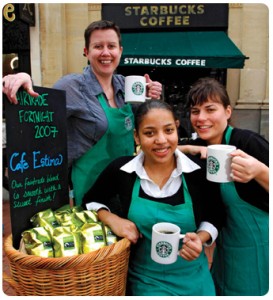I had an interesting conversation with one of my clients last night and it is one, not just myself, but every consultant and marketing executive has been thinking about since Social Media has become the craze. How do we get the leads?
And by leads, we are talking qualified expressions of interest in doing business with you leads.
What is the Role of Social Media in a Demand Generation Program?
The first part of the challenge is that we are looking at Social Media to deliver leads, and while this can happen, it is more likely that social media is an integrated part of an ongoing demand generation program working at the beginning of the cycle and supporting throughout.
The pivotal role of Social Media for Demand Generation is to attract and engage influencers, not decision-makers. To do this, you need to:
- Research your target markets and understand their current needs and issues
- Create an editorial schedule that accomplishes two things:
- Discusses the issues/needs
- Discusses the solutions to those issues and needs
- Do it without shamelessly promoting yourself. It’s not about you.
- The rest of the best practices around Social Media engagement apply
.
How do we Integrate Social Media into Demand Generation?
Integration requires an understanding of the Demand Generation process and the decision-making process of the influencer community you are targeting. Some critical things to remember:
- Align the Demand Generation process with the decision-making process
- Ensure your content is available in many forms (pod casts, pdfs, videos, webinars, presentations, etc.) to appeal to many personal preferences for acquiring knowledge
- Create a “Swiss cheese” type model of engagement allowing them to pop in and out of the process or different media options anytime, anywhere while staying within an overall demand generation framework.

- This is a marathon not a sprint. Think long term, but plan by quarter. A huge mistake is to think that these people are ready to buy based on your quarterly financial schedule. The Social Media component allows continual engagement so that when they are ready (6, 9, or 18 months down the road) you are still engaged and top of mind.
The Social Media Take-away for Influencers
The net result of the social media component within demand generation should be to build rapport, confidence and comfort in your audience. Comfort that allows them to begin to take further steps within the Demand Generation process. This will often lead them to commitment for additional steps such as attending events or webinars, signing up for newsletters, or booking 1on1 calls or meetings with your experts or Account Executives.
Emotional Stages of Commitment
Finally, your Demand Generation program should be walking them through 4 key areas of emotional commitment, each stage built by a combination of marketing tactics and personal interactions with your people.
- Rapport – Your ability to quickly engage in a meaningful way that meets their immediate needs
- Confidence – Increasing credibility through timely, relevant, valuable content and dialogue. Prove you know what you are talking about.
- Comfort – Increasing seriousness in commitment to not just the process, but the relationship
- Trust – You become a confidante and information, insights, and perspective become freely shared
Done right, Social Media becomes a lynch pin in not just ongoing intellectual engagement but also to gauge audience receptivity to your brand and their emotional attachment to your people.
This is where the rubber meets the road on developing long term, meaningful relationships that turn into customers.
Agree? Disagree? Think I’m a lunatic?
Let me know. I love the discussions and look forward to the journey of discovery with you!
Cheers!
Jeff – Sensei



